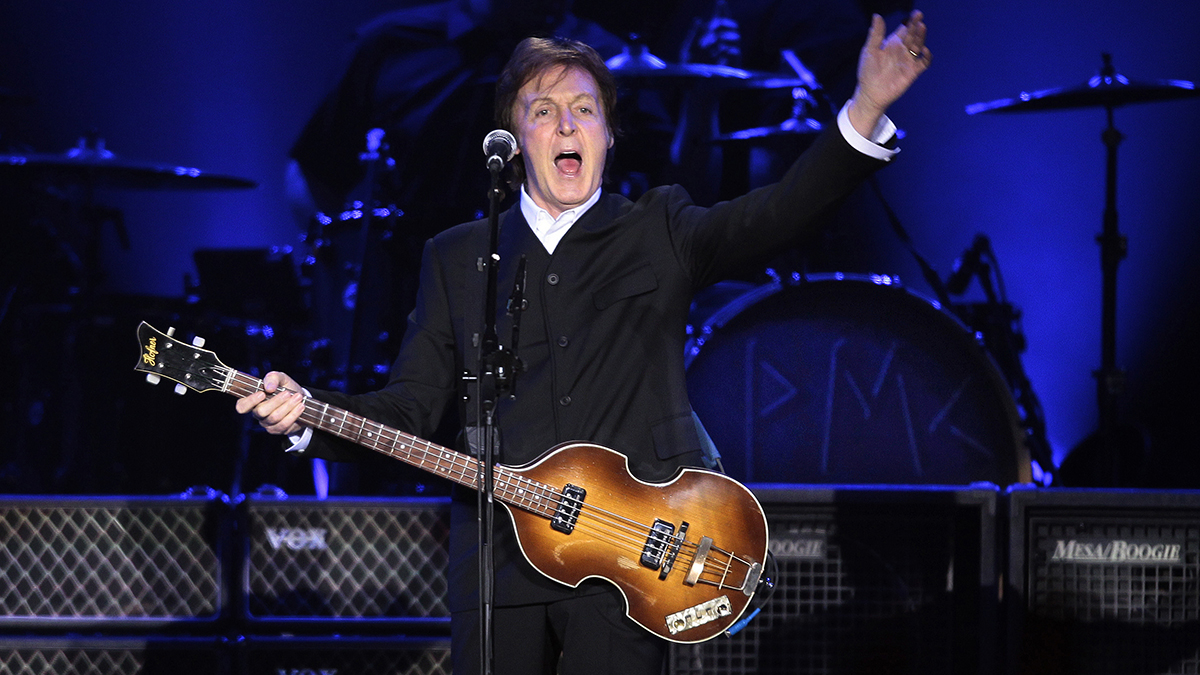Andy Rourke: “If I wasn’t eating or in the bath, I had a bass in my hand. I played it constantly”
In this interview from 2016, the late low-end legend reflects on an influential career with The Smiths and beyond, why the Fender P-Bass won his heart, and how he developed his distinct playing style
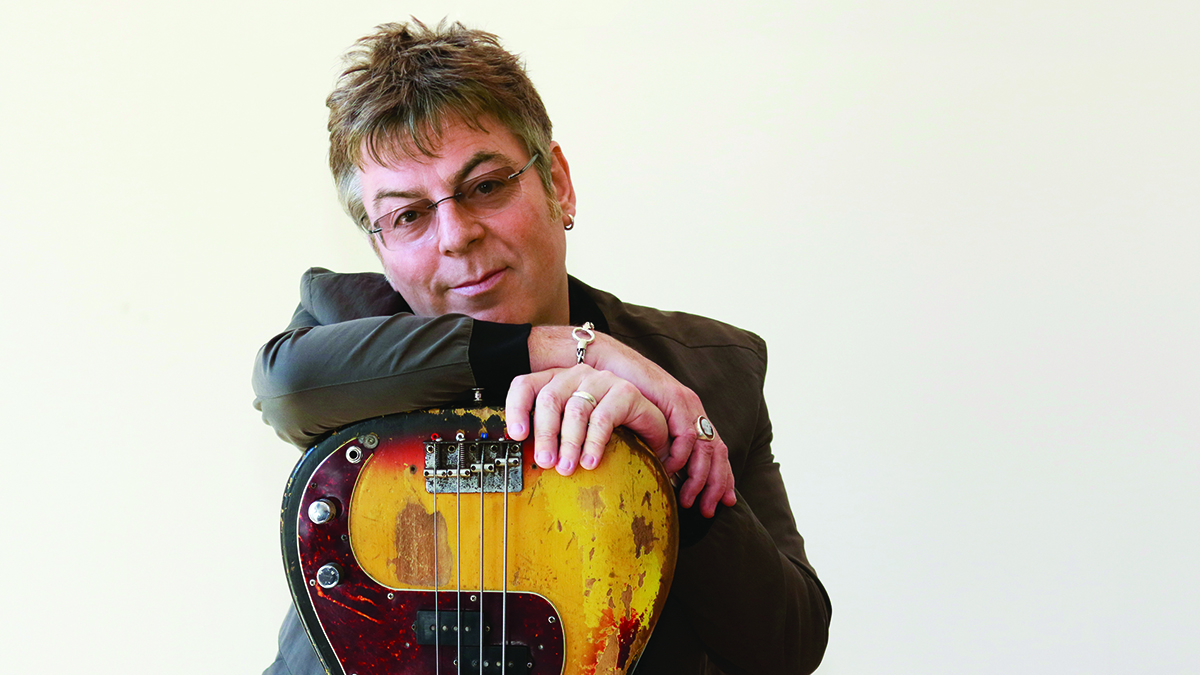
As we commemorate the life of influential bass great Andy Rourke, who has died aged 59, we are unearthing his most memorable conversations. This interview with Joel McIver was originally published as the cover feature in the September 2016 issue of Bass Guitar Magazine.
I credit my brother Robin with introducing me to the Smiths, perhaps the 1980s’ most significant force when it came to British guitar music. I was completely smitten. A lot of my acne-ridden teenage peers couldn’t abide Morrissey’s ‘unique’ vocals, but coupled with Johnny Marr’s shimmering, layered guitar tracks, it couldn’t be denied that the Smiths’ songs sounded completely different to the cheesy synth-pop and thrash metal which I thought represented all that popular music had to offer.
As the songs wafted out of Robin’s crappy hi-fi and into my ears, the bass parts stuck in my head and refused to go away. With the high mids dialled up to maximum and inventive fills thrown into what seemed like every bar, bassist Andy Rourke’s staccato picking dexterity blew my stupid teenage mind. Not that I was thinking about the bass parts in even those slightly technical terms: all I knew was that those slinky, twangy lines sounded incredible.
The Smiths split after only four albums: devotees know the tracklisting of The Smiths (1984), Meat Is Murder (1985), The Queen Is Dead (1986) and Strangeways, Here We Come (1987) by heart.
Andy Rourke spent the intervening decades playing with a long list of musicians, from Morrissey and Marr (separately) to Sinead O’Connor and beyond. After, he embarked on a new musical project with Dolores O’Riordan of the Cranberries and his colleague Olé Koretsky. Called D.A.R.K. after a combination of their initials, the trio released an album called Science Agrees in 2016.
If you’ve read all my fanboy gushing so far, you can imagine that interviewing the guy almost 30 years after I first heard his music was quite the thrill. Read on for insights into the life and times of one of the bass community’s finest...
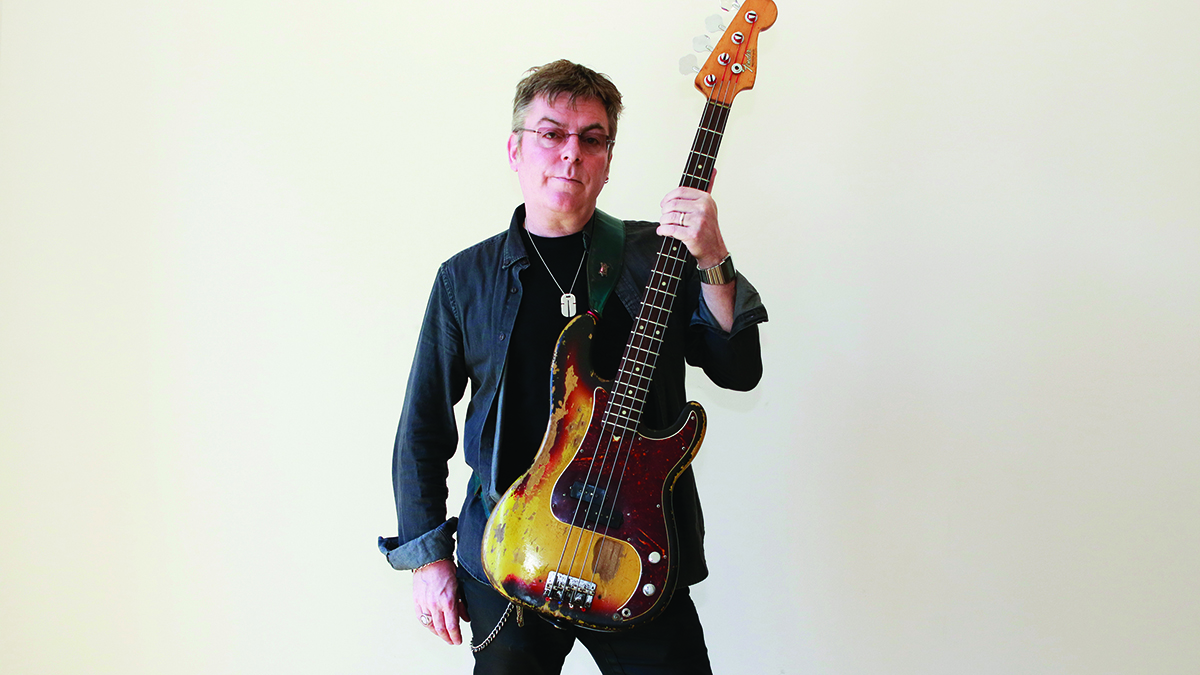
It’s great to finally get you on our cover, Andy.
All the latest guitar news, interviews, lessons, reviews, deals and more, direct to your inbox!
“Well, thank you for giving it to me. It’s my first ever cover!”
D.A.R.K.’s new album sounds amazing. How did the project come about?
“It came from my manager Melissa Aubert, Dolores’ former manager, and our shared publishers at BMG, who told me that Dolores was looking for a new project. Me and Olé Koretsky had been working on a project called Jetlag for several years, but we didn’t really know what we were going to do with it. It was just there!
“So we sent it all off to Dolores, and she loved it, and gave us some really positive feedback. We went over to Canada, where she was living, and met her. She re-recorded the vocals, and we put live drums on it, because it had had drum machine parts before that.
“Finally we called our friend Rob Ritchie, our guitarist, in for his services. It was like a big jigsaw puzzle that we put together. We used commercial studios for the drums and the vocals, but the rest of it was done in Olé's basement where he used to live in Brooklyn. We spent hours down there.”
I prefer not to overthink the basslines. I like to just get stuck in there and go with my instincts
Did the bass go down smoothly?
“Yes. I prefer not to overthink the basslines. I like to just get stuck in there and go with my instincts. If I fuck up I’ll do another take, but otherwise I’m not that picky.”
What basses are you using these days?
“I’ve still got my old faithful – my 1964 [Fender] P-Bass. It’s all beaten up: about half the lacquer is missing from the body. I got it fixed up a month ago for a hundred bucks. It really needed it. Apparently the neck was all out of whack, and the intonation was wrong, and the electrics were fused and dodgy, but now it’s in better shape than ever. The best hundred bucks I ever spent!
“I’ve also got a black Fender Jazz [Bass], which I use for rehearsals and so on. I don’t like taking the old girl out too much because she’s fragile. I’d be absolutely heartbroken if it got damaged – I don’t know what I’d do without it.”
Any endorsements you’d like to mention?
“I don’t actually have any endorsements. I should have, shouldn’t I? They must be too shy to approach me! [Laughs]”
How did you get into bass?
“I was always fascinated with musical instruments in general, as far back as I can remember. Every Christmas, and every time my birthday came round in January, I’d ask for a trumpet or a saxophone – obviously plastic ones. At Christmas when I was eight, I asked for a guitar, and my parents bought me a plastic one.
“I was getting tired of plastic instruments by this point, so I stamped my foot and demanded a real guitar, and in January they bought me a real one. My dad’s secretary’s daughter gave me some very basic guitar lessons and it went from there. I learned how to play along to the radio and my parents’ records and stuff like that. I was obsessed.”
When did you switch to bass?
“Bass came along when I joined a band called the White Dice, which is a terrible name, with Johnny Marr. The bass player was Kevin Kennedy, later known as Curly Watts [a character in Coronation Street], and the only song he could play was Don’t Believe A Word by Thin Lizzy.
Johnny Marr suggested that I try the bass. I was a bit offended at first, because I thought I was being demoted!
“After 20 rehearsals that became a little bit tiresome, so Johnny suggested that I try the bass. I was a bit offended at first, because I thought I was being demoted! But I tried it and I liked it, because it changed my whole way of thinking. Before that, I’d never consciously listened to a bassline in any song, I’d just listened to songs as a whole. After that, I became obsessed with the bass.”
Which bass players did you admire?
“John Entwistle was a big influence, and McCartney, obviously. One of my unsung heroes is Bill Wyman: no-one ever mentions his basslines, but I think they were fantastic, and really funky as well.”
What was your first bass?
“A friend of Johnny’s acquired an SD Curlee fretless, and because I had to learn on fretless, I became obsessed with Mick Karn, Japan’s bass player. I’m still a great admirer of his work, God bless him.
“And Jaco Pastorius, obviously. It just kind of opened me up, melodically, and when I finally got a fretted bass three or four years later, I still played in the same style as the fretless bass. That’s where the melodies in my bass playing come from, originally, if that makes sense.”
That’s odd, because your tone in the Smiths was nothing like the usual fretless bass sound.
“Yes, my tone was the opposite, really. The nature of the music that we were playing in the Smiths meant that the sound needed a bit more of a kick. The tone of a fretless would have been too smooth. It wouldn’t have gone with the music we were playing, so I had to switch it up. And because it’s me, and every time I do something I do it big, I exaggerated the new tone and made it super-twangy.”
When did you acquire the Precision?
“The P-Bass came along on one of the first times we came to New York to do a gig at the Danceteria on New Year’s Eve, 1983. We had just signed to Sire Records and [label co-founder] Seymour Stein invited us to go to Manny’s Music on a shopping spree. Johnny chose a red Gretsch, and then Seymour said to me, ‘What do you want?’
“I saw this sad-looking bass on the wall, and I saw that it was made the same year I was born, 1964. Even though it was all beaten up I told him I wanted that one. He couldn’t believe it and said, ‘What? I’m trying to buy you a new guitar, and you want this?’ I said, ‘Yeah, I want that one.’ I fell in love with it.”
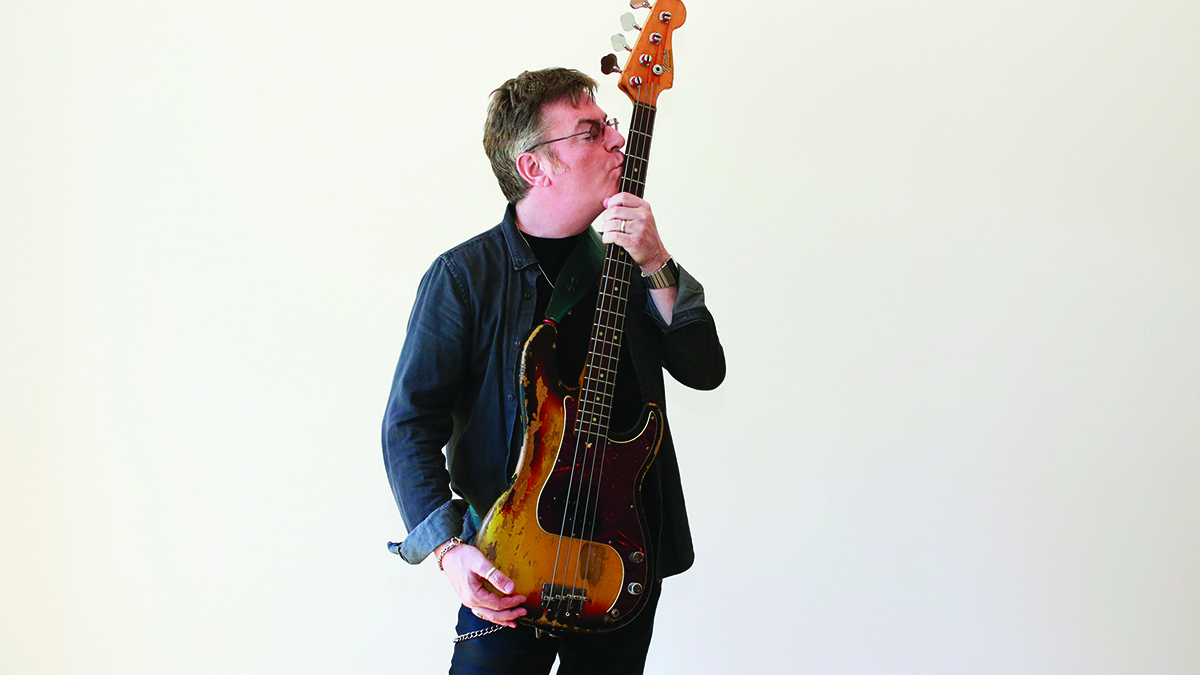
What other basses did you play in the Smiths?
“I had a Yamaha BB 3000, which is currently under my dad’s bed in Manchester, and I’ve had many other basses over the years. I also had a Rickenbacker, the stereo one. I played that on a couple of Smiths records. I always took at least two basses out on tour with the Smiths because we used different tunings: one of them was tuned up a tone to F#, B, C, A because it worked better with Morrissey’s vocal range. It made the strings like cheesewire – it was fucking painful! We also used a drop D tuning.”
What about amps?
“I used Trace Elliot back then. Nowadays I use a Marshall valve head, a big heavy beast from the '90s, and an 8x10 cab. I should get more familiar with the new small amps, but I’ve never really tried. I try not to carry the Marshall around, because it’s heavy and I don’t have any roadies anymore.
“Technology’s come along a lot since back in the day, and you can get away without an amp, or you can ask the venue to hire one for you. It’s not ideal, though.”
If I wasn’t eating or in the bath, I had a bass in my hand
You were only 19 when you recorded the first Smiths album in 1983, but you already had a very precise, melodic style. How come?
“It was just my love of bass playing. I rehearsed a lot. If I wasn’t eating or in the bath, I had a bass in my hand and I played it constantly.”
What Difference Does It Make? is a high point of that album in bass terms.
“Actually, there are two different versions of What Difference Does It Make? – the very early version is a lot more busy in the bass, with an almost rockabilly style. On the second version, when [producer] John Porter got involved, he wasn’t happy with the bass so I tried another approach. I like both versions, though.”
How did you hit on the trebly tone for the Smiths’ bass parts?
“The bass sound in the Smiths came about from me trying to overcompensate, because there was only me and Johnny Marr. Some of the later recordings have a million guitar overdubs, but in the early days it was just me and Johnny, both playing overtime to make the biggest sound possible. I used Rotosound roundwounds because I needed the twang.”
Did you use any effects?
“In the early days I had a Boss chorus pedal and a flanger. You can hear a bit of chorus on How Soon Is Now?, although I’m not a big fan of the way the bass is produced on that song. It sounds a bit muddy to me. Personally I would like it to have been a bit more present.”
Did you have autonomy over your bass parts in the Smiths, or were they collaborative?
“99 percent of the time I had autonomy. Occasionally Johnny would give me a little nod about what he liked, but that was rare. All the bass parts are my babies, and you’re not supposed to have favorites, are you? I’m proud of them all.”
After the Smiths, what was next?
“Directly after that I did Morrissey’s second album and a bunch of singles and B-sides. That was a weird time, because me and Mike [Joyce, Smiths drummer] were his rhythm section and at the same time, Mike was suing him. I was subpoenaed to give evidence for Mike, so that was a difficult time.”

Then you toured with Sinead O’Connor. What was that like?
“Sinead was great. She’d recorded I Do Not Want What I Haven’t Got and was looking to put a live band together, so me and Mike got the call from her then-manager Fachtna O’Ceallaigh. She was living in Willesden in London at the time, so we went to meet her and then I toured with her for a year and a half.
“When we joined her band, it was the calm before the storm: the gigs got bigger and bigger until we were doing amphitheatres, and all the craziness started happening. It was intensive: I think we had one day off a week, and that was probably a travel day. Tour buses, hotels, gigs... I just remember being exhausted by the end of it.”
Did you play bass differently after the Smiths?
“My playing definitely changed, because I was thrown into all these different situations. I felt as if I had to be more flexible. You can’t just be a one-trick pony when you’re playing with different artists. It was good discipline for me, and I’m sure it helped my bass playing. Then again, I played with the Pretenders and went back to basics, almost like the style I was playing with the Smiths. Chrissie Hynde was great to work with.”
Why do you need a five-string bass? It doesn’t make sense. It doesn’t sound like a bass
Did you ever upgrade your bass gear in line with newer technology?
“No. I just stayed with what I had.”
Ever been tempted to play a five-string?
“Definitely not. Why do you need a five-string bass? It doesn’t make sense. It doesn’t sound like a bass. I tell you what, though – I’m about to order a Fender baritone bass, which is in between [a four- and five-string in range]. I can understand that. You can hear me playing a baritone bass on Vicar In A Tutu – that twangy, Duane Eddy kind of style. But why you’d have a five-string bass, I have no idea.”
Was slap bass your cup of tea?
“I was really into it, yes. I listened to a lot of Stanley Clarke records, School Days in particular. He’s amazing. Slap appeared here and there in the Smiths. Barbarism Begins At Home is slap bass with a pick: I don’t think Morrissey thought it was cool to do slap bass. But I bought Level 42’s records and went to see them: I thought they were great.
When I’m playing on stage I’m just focused on playing the bass. If I even tap my foot, I’ll fuck up
“And I definitely admire Flea’s playing, he’s a really accomplished player. I also admire how he can jump around at the same time, because when I’m playing on stage I’m just focused on playing the bass. If I even tap my foot, I’ll fuck up! I can’t multitask like he can.”
The list of sessions and gigs you’ve done has stacked up over the years.
“It’s adding up, yeah. My bass playing’s definitely changed. Like me, it’s become more mellow. If called for, I can go back to the old style, but I’ve gone back to playing with my fingers and using a more rounded sound.”
How’s your back holding up after lugging a Precision around for 30-plus years?
“Not bad, actually, I can’t complain. Maybe the bass has got woodworm, it seems lighter every year. When I pick up a new P-Bass it seems twice as heavy as mine.”
The Freebass project, with you, Peter Hook and Mani from the Stone Roses, sounded promising when it was announced a decade ago, but it failed to materialize. How come?
“I don’t know. There was a clash of personalities and it was a strange time. Initially I quit, and then Mani quit. But I love those guys. They’re my friends. We just couldn’t work together, but we tried.”
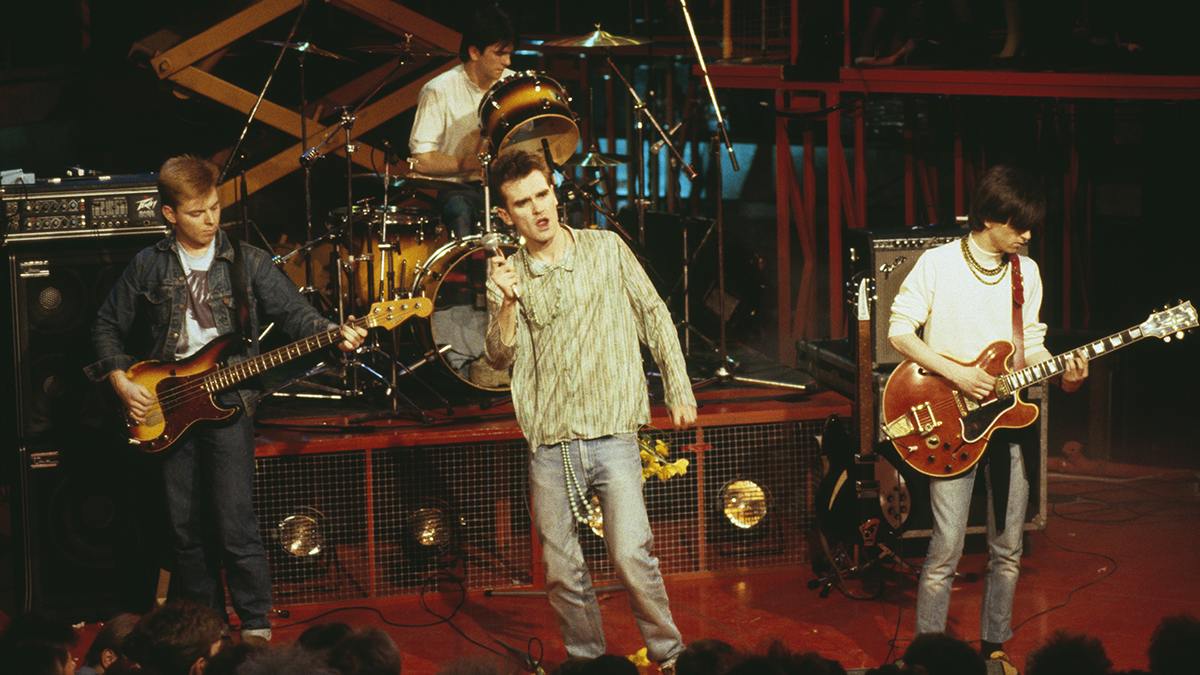
What do you do when not playing music?
“I like to cook, but I’m not very good at it. I like to experiment, so I’ll start making a pasta and sauce and my wife will taste it and say ‘That’s really good’, but then half an hour later I’ve destroyed it by putting in too much pepper or salt. I never know when to stop. Apparently you have to be very disciplined to be a cook.”
It’s funny that you lack discipline in the kitchen, because your bass parts in the Smiths were very nuanced and precise.
“Yeah, I don’t know what came over me. It was effortless. I wish I could have those moments every day.”
So is D.A.R.K. taking up all your time at the moment?
“That’s what I’m focused on. We’re off on tour in the UK and Europe in September, and then hopefully we’ll do some North American dates in the winter.”
It’s a while since you’ve played live, isn’t it?
“You know what, I’ve not played live for 10 years, apart from when I jumped on stage with Johnny a couple of years ago when he played in New York. We did How Soon Is Now?”
Joel McIver was the Editor of Bass Player magazine from 2018 to 2022, having spent six years before that editing Bass Guitar magazine. A journalist with 25 years' experience in the music field, he's also the author of 35 books, a couple of bestsellers among them. He regularly appears on podcasts, radio and TV.






